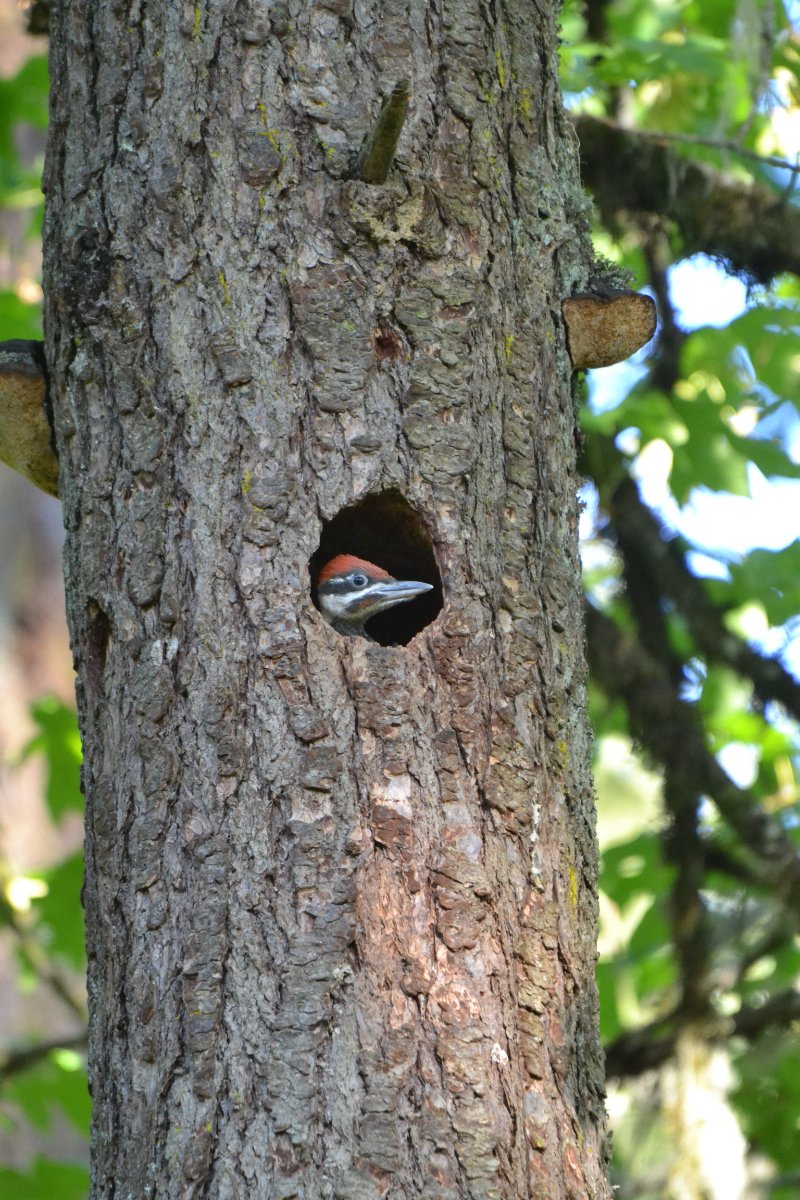When the baby birds are born, they are nearly naked with their eyes closed. They have sparse grayish-white down which you can see on their heads. As one rears its head back wanting food, the light shines through illuminating its apricot skin color.
Both males and females equally share the chick-rearing duties of sitting on the eggs and feeding the young.
The nest is a loose construction of small sticks that is surprisingly sturdy. Sometimes, the sticks are woven in such an open and airy fashion, that the eggs are visible through the bottom of the nest. This may aid in regulating the temperature of the nest when brooding the eggs and raising the baby birds.
These fragile, tiny creatures are also pretty hardy. They have had to endure some cool, rainy temperatures this spring.























